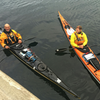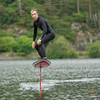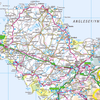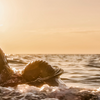Coastal Navigation Series (Part 1) - A Beginners Guide to Understanding Tides
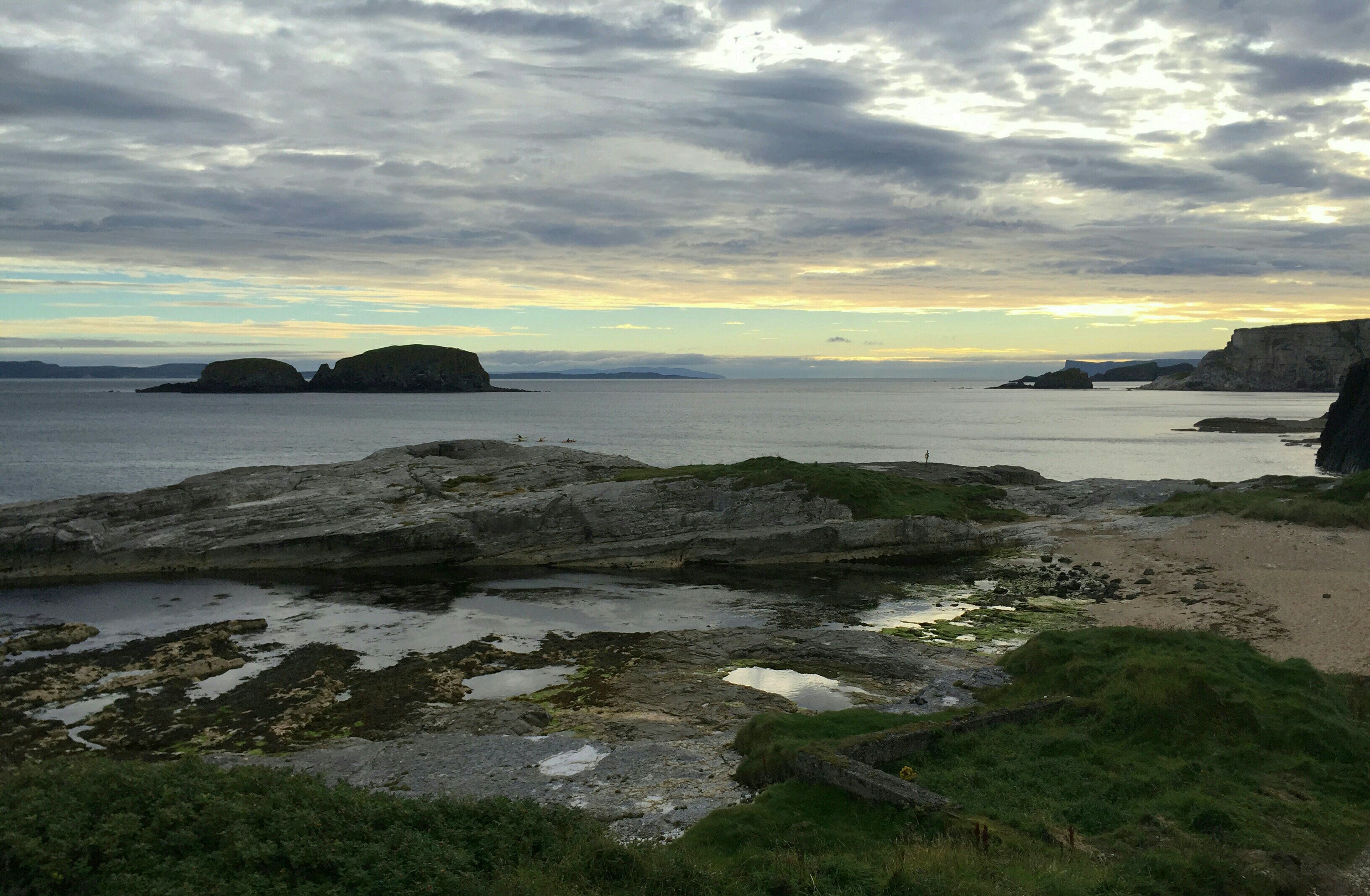
(Picture - Kayakers paddling out at low tide from Ballintoy Harbour NI, With Sheep Island, Rathlin and Scotland in the background)
Introduction
As sea kayakers and stand-up paddleboarders (SUPers) in the UK, you will have noticed the ebb and flow of the sea during your aquatic adventures. These tidal movements are great to watch and crucial to understand for safe and enjoyable paddling experiences. This beginner's guide will delve into the basics of how tides work, explore the concept of spring and neap tides, provide examples of places to find tide times, and discuss the significance of different time zones like BST and GMT for UK paddlers.

(Picture - A Portland Plotter on top of a chart and journey palnner)
Moreover, we'll include some exercises to help you remember the essential information. We will dive into complex tidal info, like "Tidal Diamonds", "The rule of 12ths", and more, later in our "Tidal Navigation Series."
If you understand the basics already, this blog (Menai Strait Tides - a basic explanation) will give you a real-world example of a more complex tidal area.
----------------------------------------------------------
Understanding Tides
Tides result from the gravitational pull of the moon and, to a lesser extent, the sun on Earth's waters. The moon's gravitational force causes the water on the side facing the moon to bulge, creating a high tide. On the opposite side, there is another high tide caused by centrifugal force. In between these high tides are low tides. As the Earth rotates, different locations experience these tidal movements, leading to the rhythmic rise and fall of sea levels.
----------------------------------------------------------
Spring Tides and Neap Tides

Spring Tides: During the new moon and full moon phases, the gravitational pull of the moon and sun align, reinforcing each other and creating higher and lower tides. These are known as spring tides. Contrary to the name, they have nothing to do with the season and occur approximately every 14 days. Spring tides have more extreme ranges, so the low tide seems very low, and the top of spring is very high. Spring tides will be associated with stronger tidal currents.

Neap Tides: Neap tides occur during the moon's first and third quarter phases when the gravitational pull of the moon and sun are at right angles. This results in weaker tidal forces, leading to lower high tides and higher low tides than the average. Neap tides also occur approximately every 14 days. These tides are associated with weaker tidal rates.

( Picture - Screen grab from a digital tide table, showing the tidal range changing from springs to neaps over 14 days)
----------------------------------------------------------
Finding Tide Times
As UK sea kayakers and SUPers, planning your outings around the tides is essential. Fortunately, several reliable sources provide tide times for various locations along the UK coastline. Popular choices include:
- The UK Hydrographic Office's "EasyTide" website. Which makes seven-day predictions
- BBC Weather.
- Local ports and harbours websites.
- Tide tables, Usually used for larger ports like Liverpool and Dover. These tide books give tides for an entire year! These provide info on how to convert the times to your home port.
Many mobile apps also offer up-to-date tide information, making it easy to check tide times.

(Two kayakers paddle on a cold evening.)
Importance of GMT and BST
GMT (Greenwich Mean Time): During the autumn and winter months, the UK operates on GMT, standard time. Tide times are not adjusted during GMT, making remembering the actual time when planning your paddling adventures very easy.
BST (British Summer Time): The UK observes BST, which is GMT +1 hour during the spring and summer months (Late March- late October). When BST is in effect, the tide times are adjusted forward by one hour. Considering this time change while planning your paddling activities is crucial to ensure you take advantage of the tide's peak and get to crux points at the right time.
----------------------------------------------------------
The 12-Hour Tide Cycle
As we have discovered, the moon's gravitational force influences the oceans, and a rhythmic ebb and flow occur approximately every six hours. At low tide, the sea recedes, exposing stretches of seabed and sandbanks, creating a paradise for beachcombers and wildlife alike. During this phase, sea kayakers and SUPers may encounter shallow waters, providing unique opportunities to explore hidden coves and tidal pools. This can be a big issue for larger ships or boats but not us!
As the tide transitions to high tide, the water reaches its peak level, covering the previously exposed seabed. High tide brings a sense of vitality and vibrancy to coastal environments, transforming the landscape and offering expansive waters for paddlers to venture into. This phase also provides access to areas that might be unreachable during low tide, enabling kayakers and SUPers to explore the intertidal zone.
When the tide rises and drops, the change in water heights, combined with narrow or shallow channels, can create faster-flowing water. We won't cover these in this article, but it's worth considering. If in doubt, remember that the fastest flowing water will usually be in and around the middle two hours of the 6 hours between the top and bottom of the tides. With a period of relatively slack or static water at high and low tide.
The 12-hour tide cycle is consistent and constantly moving, offers excellent paddling opportunities, and reminds us of the fascinating interplay between the moon, the tides, and the marine world.
----------------------------------------------------------

----------------------------------------------------------
Conclusion
Understanding tides is vital for safe and enjoyable UK sea kayaking and SUP experiences. Understanding basic tidal movement, the differences between springs and neaps, where to find tide times, and the significance of time zones like BST and GMT ensures that you can confidently plan your paddling adventures and make the most of the ebb and flow of the sea. So, jump into the world of tides and go with, across or against the flow. Whatever your plan is. Happy paddling!
-
Posted in
coastal navigation series, navigation, seakayaking, sup, tide
